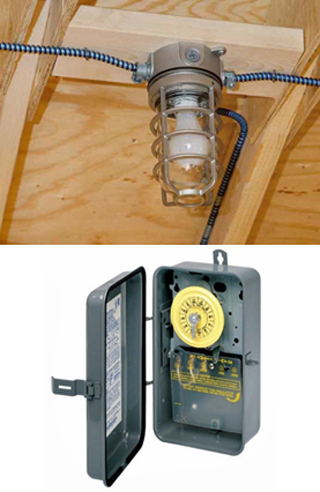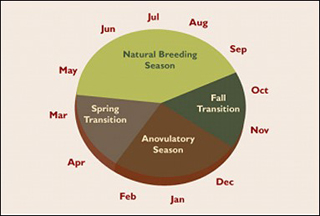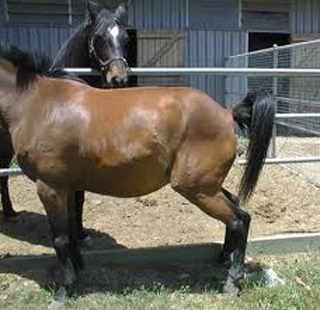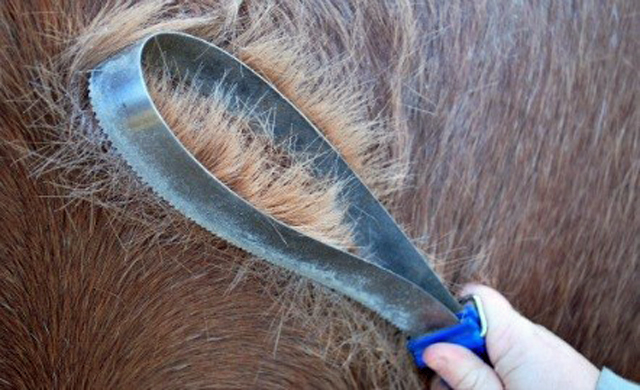Horses are seasonal breeders
When day length is getting shorter, mares begin to grow winter hair coats, their estrous cycles become erratic, then they stop ovulating for a period of time that is called anestrous. After December 21st (winter solstice) the days begin to lengthen. The mare perceives subtle changes in daylight and, as spring approaches, she begins to shed her winter coat and her reproductive system begins to “wake up.” This time of year is called transition. During transition mares will develop follicles and display behavioral signs of estrus, but they do not ovulate. Without an ovulation, the mare cannot become pregnant. On average, the date of first ovulation in horses in the Northern hemisphere is April 1st. If a mare does not become pregnant, she will come in heat and ovulate about every 21 days throughout the breeding season. The natural breeding season for horses is April 15th through August with the greatest fertility in June (longest day of the year). Considering an average gestation length of 340 days, a mare that is bred April – June will foal March – May. It is noteworthy that a mare bred in the natural breeding season will foal at an optimal time of year for foal survival. Day length is the environmental “cue” that synchronizes reproductive cyclicity with season of the year.
Universal birth date
January 1st is the universal birthday for registered horses. Regardless of actual birth date, they are classified a year older each time they pass January 1st. Most horses are not fully mature until they are four years old. For showing or racing events involving young horses (<4 years old) there is potentially a competitive advantage for horses born earlier in the year rather than later in the year, because a January born two year old will likely be more growthy than a May born two year old. For this reason, the show and race horse industry’s imposed breeding season begins February 15th and ends June 15th. What this means for the breeding shed manager is that many people are trying to breed mares that are still in transition. It can be very frustrating because mares may be showing signs of heat but are not ovulating. Having your veterinarian confirm ovulation is the best way to know the breeding season has officially begun for your mare.
Fooling Mother Nature
 The use of artificial lighting to hasten the onset of the breeding season has been well documented in horses. Exposing mares to extra hours of light alters the mare’s perception of day length. The addition of 2-3 hours of light at dusk is more effective than early morning light or 24 hours of light. The response to extended days takes about 60-90 days, so if you want to breed mares February-March, you should begin your light treatments no later than December 15th. Bringing pastured mares in for their supper in the evening and putting the lights on an automatic timer is a practical way to provide the “long day” experience. A 200 watt bulb in a 12X12 stall is sufficient (2 foot candles) illumination to achieve a response. If you do not want to stall horses, you can use flood lights in outside pens. The lighting regime should continue until the mare is pregnant, or until after April 1st, whichever comes first.
The use of artificial lighting to hasten the onset of the breeding season has been well documented in horses. Exposing mares to extra hours of light alters the mare’s perception of day length. The addition of 2-3 hours of light at dusk is more effective than early morning light or 24 hours of light. The response to extended days takes about 60-90 days, so if you want to breed mares February-March, you should begin your light treatments no later than December 15th. Bringing pastured mares in for their supper in the evening and putting the lights on an automatic timer is a practical way to provide the “long day” experience. A 200 watt bulb in a 12X12 stall is sufficient (2 foot candles) illumination to achieve a response. If you do not want to stall horses, you can use flood lights in outside pens. The lighting regime should continue until the mare is pregnant, or until after April 1st, whichever comes first.
Two things to remember:
- If you breed mares before February 15th, you run the risk of having foals born in December. The result, January 1st your newborn foal would be considered a year old.
- Remember that a side effect of extended daylight is the shedding of hair. During February cold snaps, you may need to protect your mares from freezing weather.
- Economic Impact Study Indicates the Florida Equine Industry Remains Strong - April 12, 2024
- Management Strategies to Prevent Seasonal Impaction Colic in Horses - October 27, 2023
- Respond to the 2023 American Horse Council Economic Impact Study Survey - February 17, 2023



